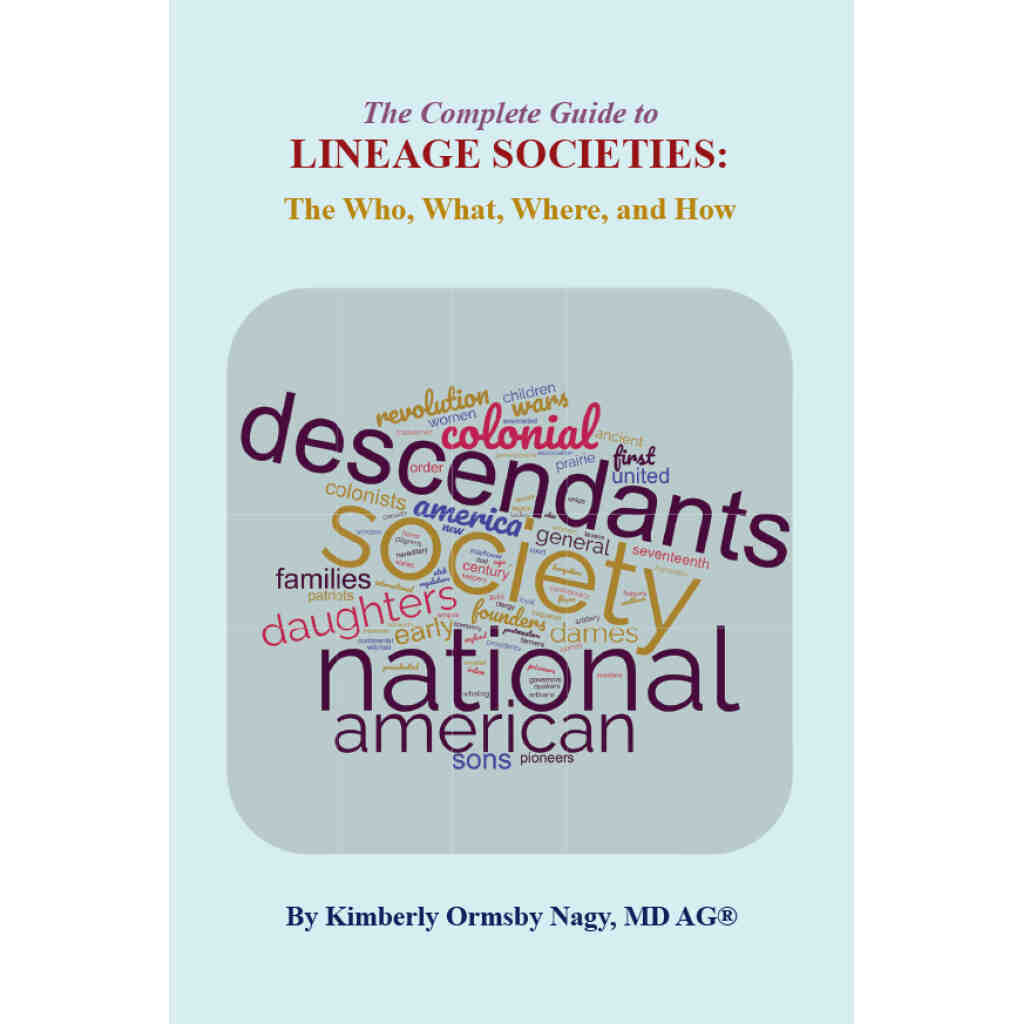Now Dr. Nagy has written a concise and informative handbook about lineage societies, explaining what such societies offer, describing how membership works, exploring eligibility, and moving through the application process, step by step.
Considering that my husband's ancestral background could qualify him for several lineage societies, I was interested in this book and appreciated the author's ability to clearly capture the key points of who, what, where, and how in only 80 pages.
Please note: The Genealogical Publishing Company sent me a free review copy of this book, and it has previously provided free review copies of other books. My reviews always reflect my honest opinions, without regard to any outside influence.
The table of contents for this new book is:
Chapter 1: What is a lineage society? The author explains the premise, which is to recognize and honor a specific group of people, such as early settlers in certain regions, those who fought in particular wars, descendants of royalty, and so on.
Chapter 2: What does a lineage society do? In addition to honoring a certain group of ancestors, a lineage society's mission may focus on historic preservation, a charitable cause, education, or patriotism.
Chapter 3: How to locate a lineage society - A variety of suggestions for how to find and connect with a lineage society, online or on social media and beyond.
Chapter 4: Eligibility - This chapter looks at the two main elements of eligibility: lineage and service.
Chapter 5: Beginning the application process - What to expect when approaching a society about applying for membership.
Chapter 6: Documenting your lineage - One of the two main elements of eligibility is proven lineage from a qualifying ancestor. The author outlines acceptable types of lineage proof (not online family trees!) and provides helpful tips for finding and documenting descent from that key ancestor.
Chapter 7: Documenting your ancestor's qualifying service - The type of "service" is determined by each lineage society; some are based on military service, some on civil activities, some on occupations, etc. This chapter points readers in the direction of sources for service documentation.
Chapter 8: Completing the application - Illustrated with pages from actual applications, this chapter guides readers through the process of putting specific info on the application for submission to the society.
Chapter 9: What next? Waiting for a response, and what comes after acceptance: going to meetings, reading publications, getting involved.
Chapter 10: Special considerations - A potpourri of possibilities, such as understanding whether collateral descent qualifies and lineage societies for children.
Appendix: Selected listing of lineage societies, some that are well known (General Society of Mayflower Descendants) and some not as well known (Hereditary Order of the Red Dragon), with web contacts.
Selected Bibliography: Books for lineage-related research and sources for researching the "service" of a qualifying ancestor.
I recommend Dr. Nagy's book as a practical introduction to the world of lineage societies and a roadmap to moving through the entire process, from figuring out what society to join to gathering/documenting lineage and service proof and then working on the application. For readers with intermediate and advanced genealogy research skills, the resources named are likely to be mostly familiar--but curated with an eye toward what lineage societies require for an application to be approved.
Please note: The Genealogical Publishing Company sent me a free review copy of this book, and it has previously provided free review copies of other books. My reviews always reflect my honest opinions, without regard to any outside influence.


I love lineage societies! I find another benefit in applying for membership is that it forces you to document a line thoroughly, which might expand your research. And, it's a research challenge to find all that is needed to be accepted. I'm going to recommend this book to my library. Thanks for reviewing it.
ReplyDelete